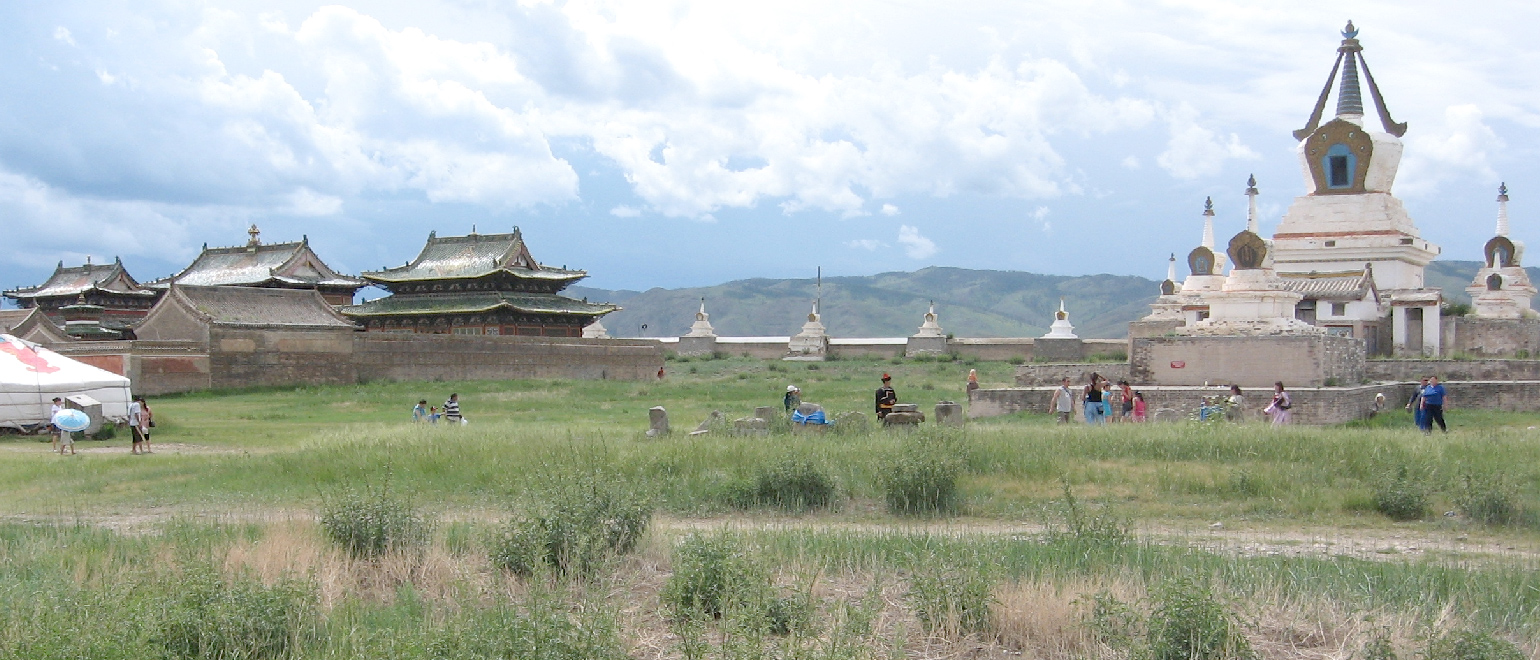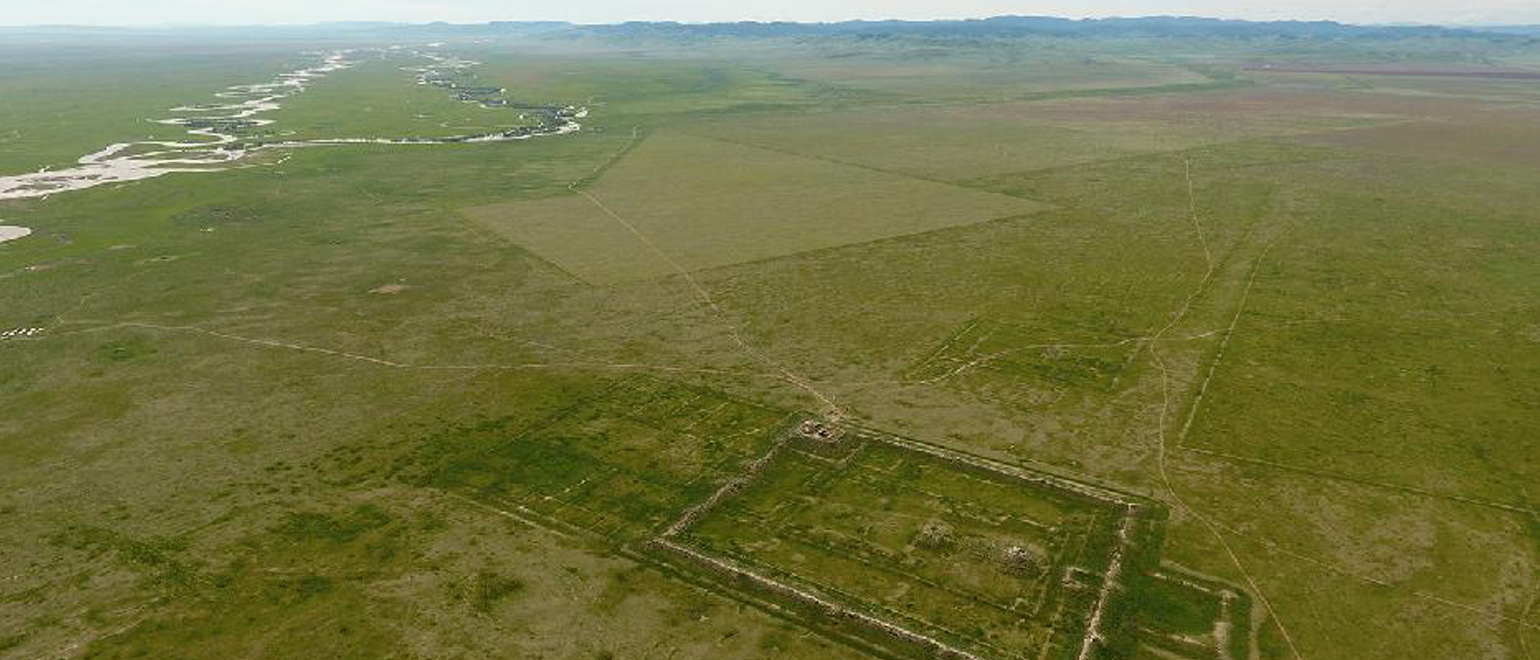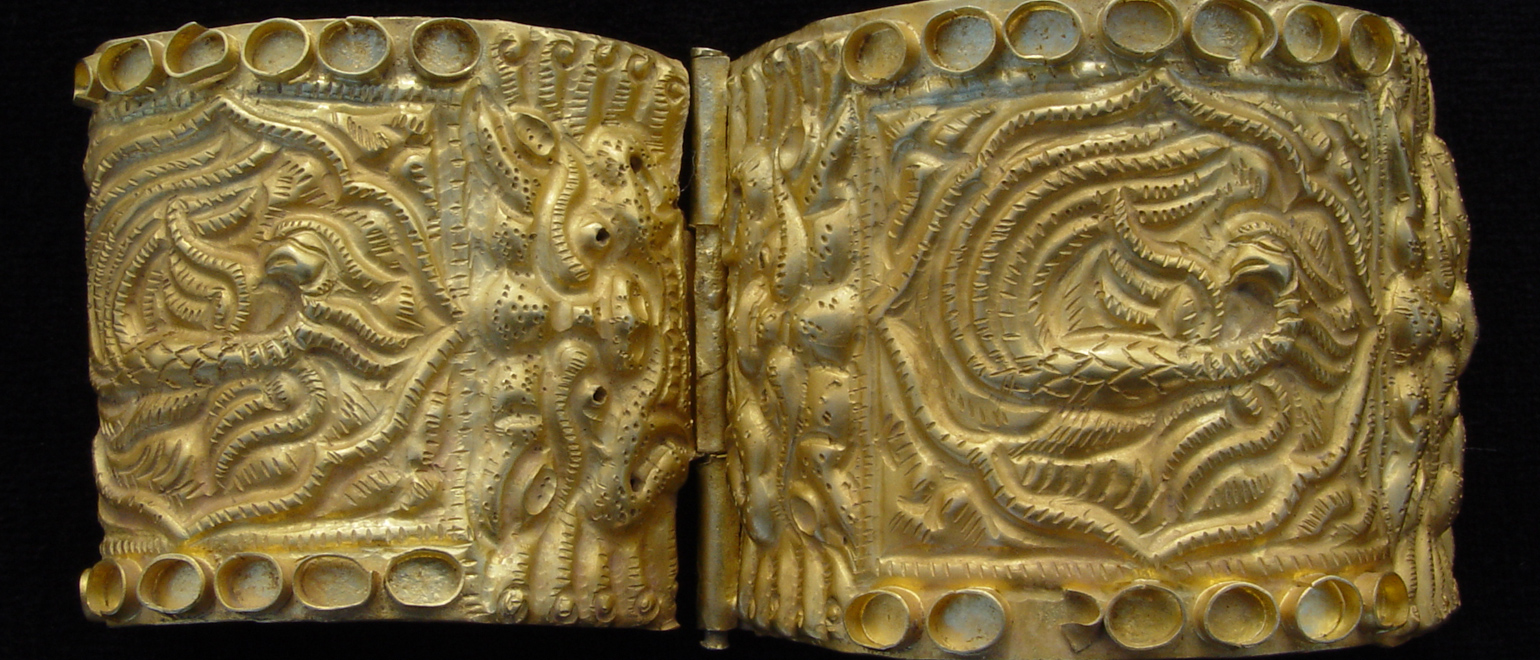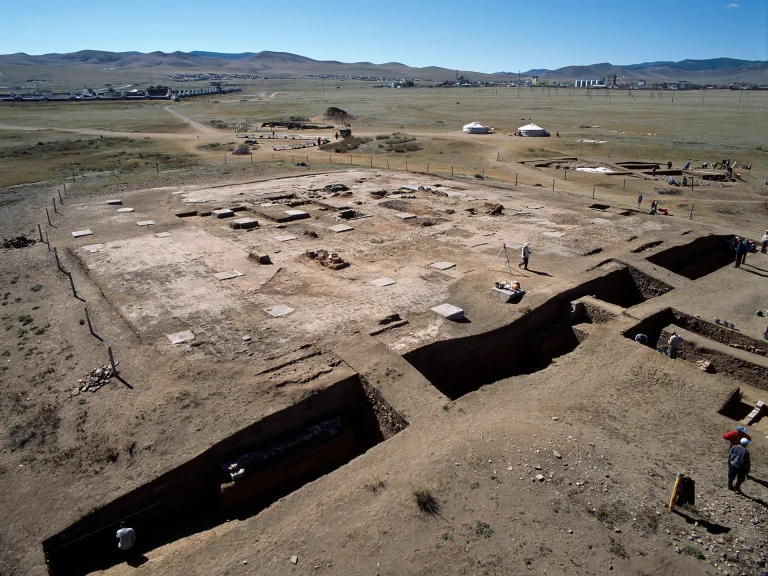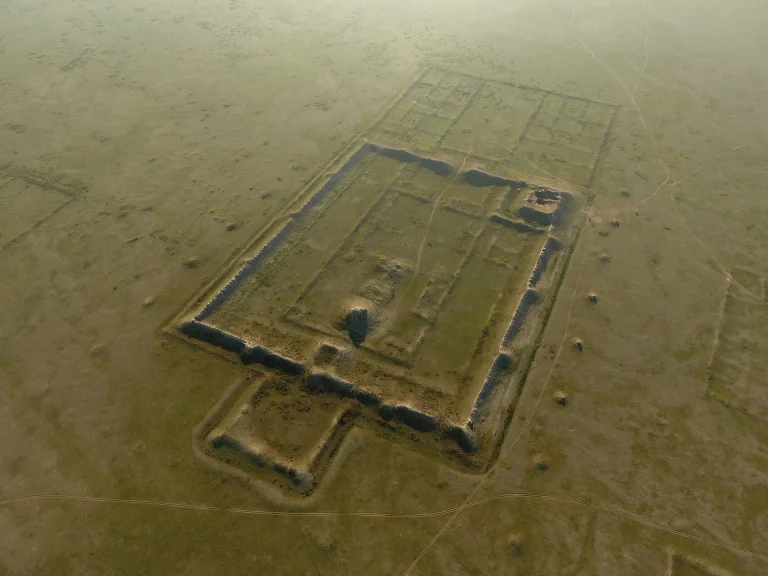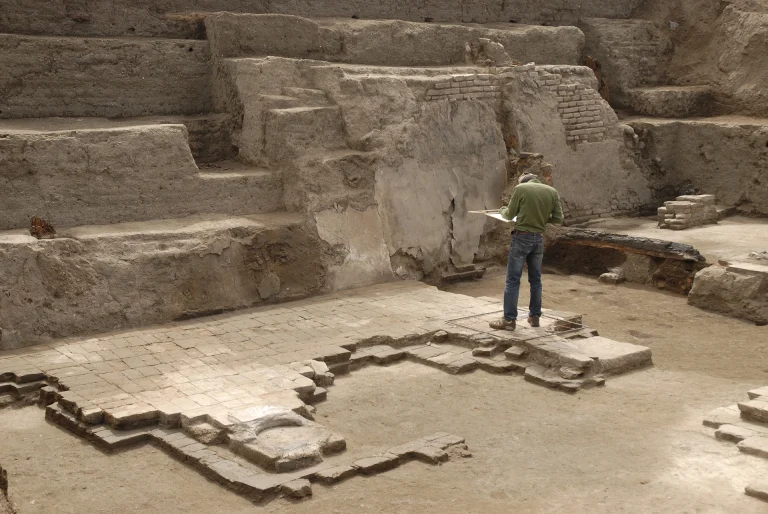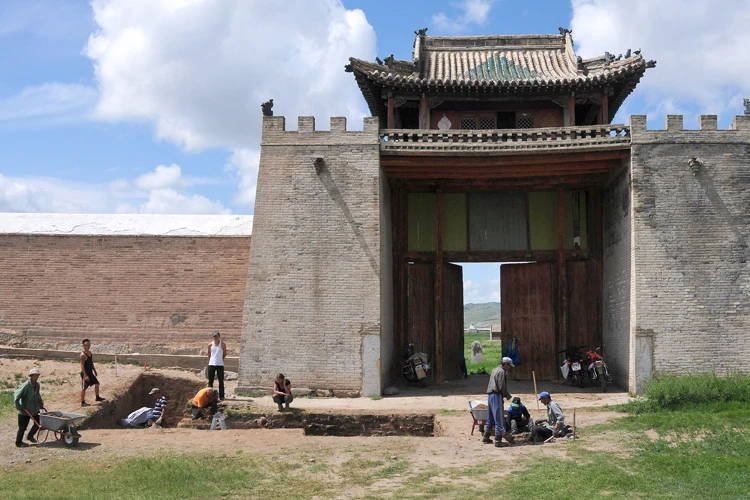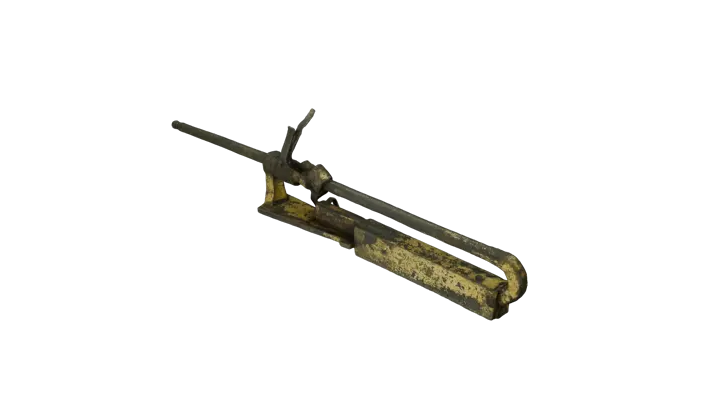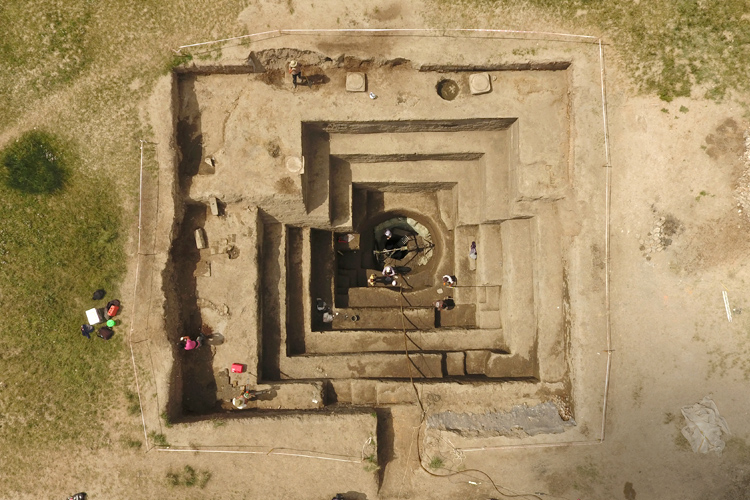Cradle of the Nomadic Empires
The Mongolian Orkhon Valley, a UNESCO World Heritage Site with the city complexes of Karabalgasun and Karakorum, has been the focus of intensive research by an international team for more than 20 years. Every year, the research brings new insights into the significance of this unique region to light and deepens our understanding of an era that shaped world history.
The Orkhon Valley “Virtual Museum”
Welcome to a journey of discovery through the Orkhon Valley! This website invites you to immerse yourself in the fascinating history of this region and to explore the extraordinary archaeological finds that have been made over the last 25 years through the collaboration of Mongolian and German scientists.
Similar to a museum tour, you can move through the various thematic areas, discover important sites and their finds and thus always learn something new about this historical treasure trove. We see this site as a living project that is constantly evolving. We regularly present new discoveries and expand the collection, so it is always worth taking a look at our Orkhon Valley “Virtual Museum”.
We hope you enjoy browsing and discovering!
A Treasure of World Cultural Heritage
Karakorum, the glorious capital of the Mongol Empire founded by Genghis Khan in the 13th century, and Karabalgasun, the Uyghur metropolis from the 8th and 9th centuries, are unmissable World Heritage treasures. Founded as capitals of great nomadic empires, these historic cities are at the centre of fascinating discoveries made in more recent times. The virtual museum invites you to explore these exciting finds and learn more about the region and its history.
On this page you will not only get a comprehensive overview of the rich history of the Orkon Valley, but also detailed information on the development and significance of Karabalgasun and Karakorum. Learn more about current excavation projects, their spectacular results and the modern archaeological methods used to further deepen the knowledge of this unique region. Immerse yourself in the exciting world of archaeology and discover the secrets of the Orkhon Valley!
The Mongolian Capital Karakorum
Karakorum, founded in 1235 as the first capital of the Mongolian Empire, remains a living symbol in Mongolia’s collective memory to this day. This legendary city, located about 400 km west of Ulaanbaatar in the Orkhon Valley, has long attracted the interest of scholars worldwide. This research is revealing more and more details about a city that was considered a vibrant, multicultural metropolis in its brief but brilliant heyday. Written sources tell of a city where cultures and ideas collided – a description that is impressively confirmed by the latest archaeological finds. Karakorum was more than just a capital; it was a melting pot of world history and remains a fascinating chapter of Mongolian culture to this day.
The Research Project
For more than 20 years, Mongolian and German scientists have been working hand in hand to explore the fascinating history of this unique cultural landscape and share their findings with the world. What once began as the Mongolian-German Karakoram Expedition has now developed into the Mongolian-German Orkhon Expedition, which brings researchers from all over the world to the Orkhon Valley every year. Together, they embark on an exciting search for the secrets of this region steeped in history in order to preserve and reveal its cultural heritage for future generations.
The Temple Platform in Karakorum Rebuilt in 2014
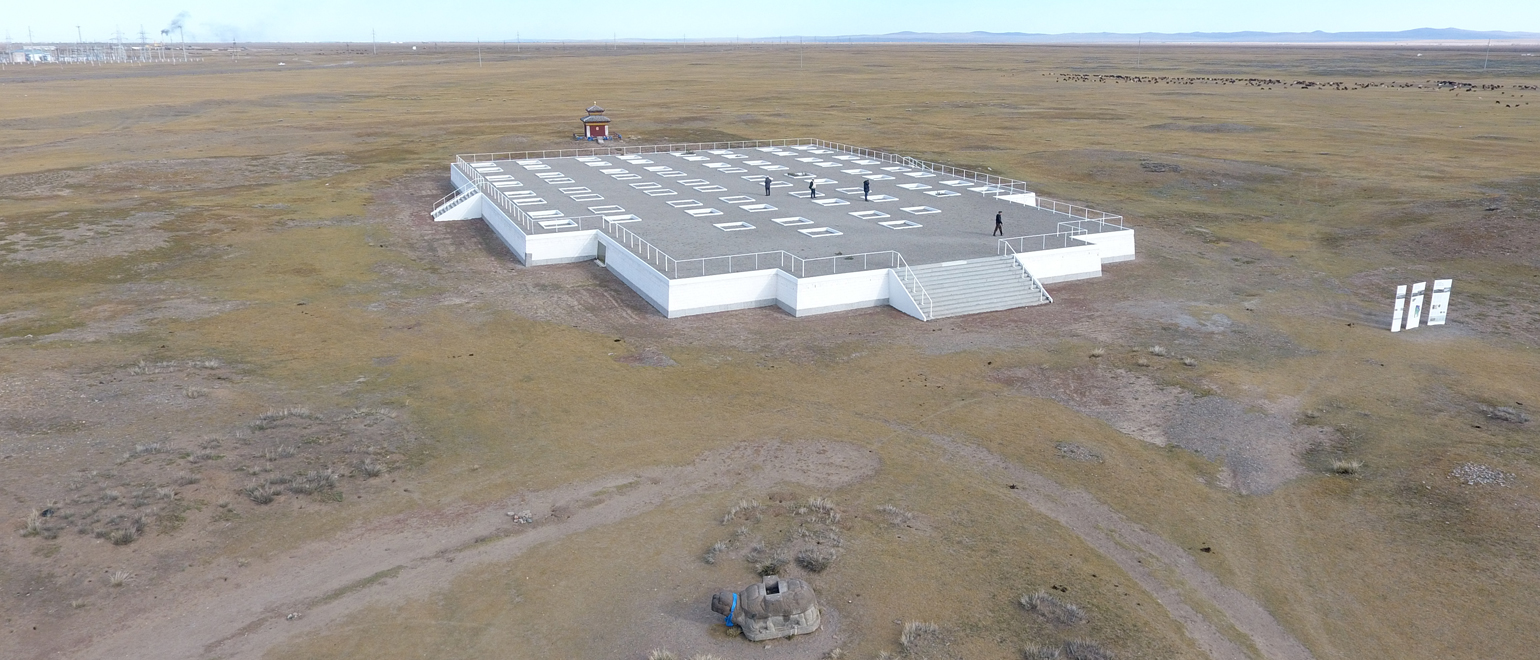
Brought to Light after Centuries – The Virtual Catalogue of Finds
The excavation campaigns of the Mongolian-German expeditions not only uncovered the remains of cities and their buildings. Many interesting artifacts were also found that bear witness to the craftsmanship, beliefs, economy and everyday life in the medieval nomadic kingdoms. This page presents a selection of particularly beautiful, interesting or significant finds and tells their story. All exhibited objects can be found via the virtual finds catalogue. Here you will find a short description, pictures, information about the find location and often a 3D model that allows you to turn and rotate the objects and view them in detail from all sides.
Highlights from the Catalog
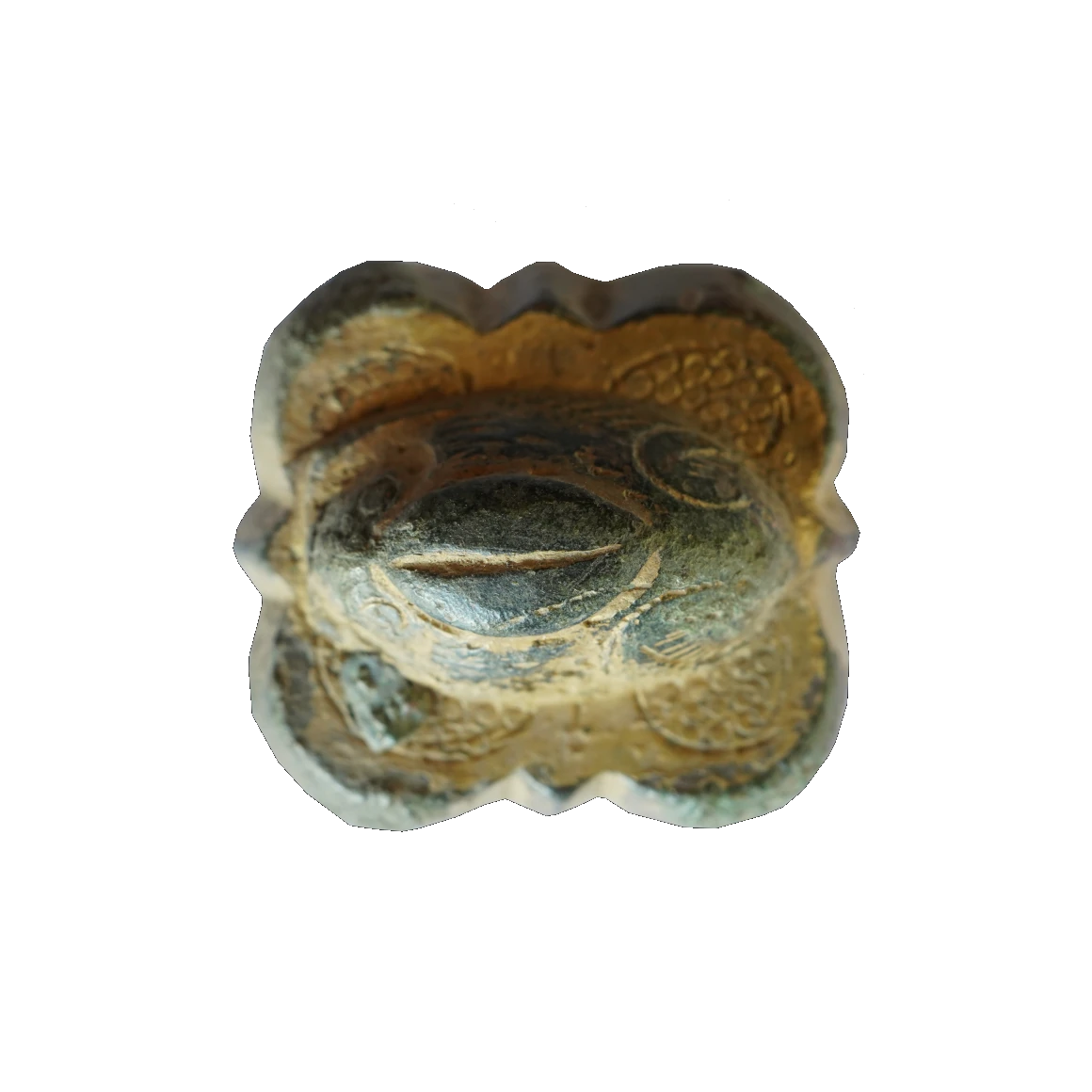
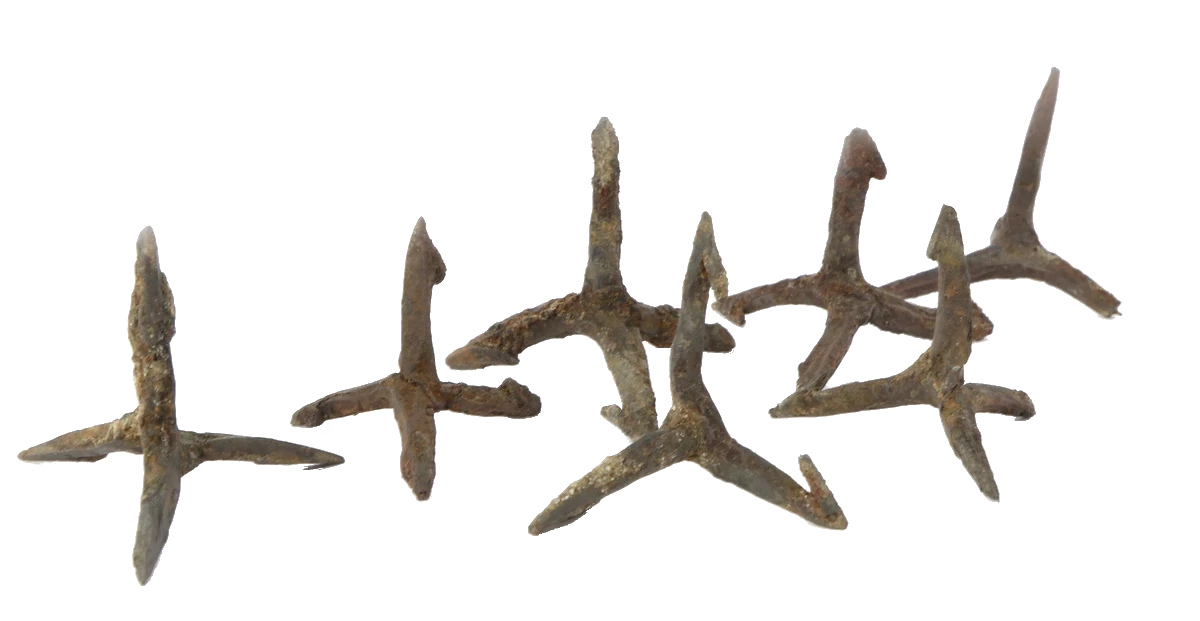
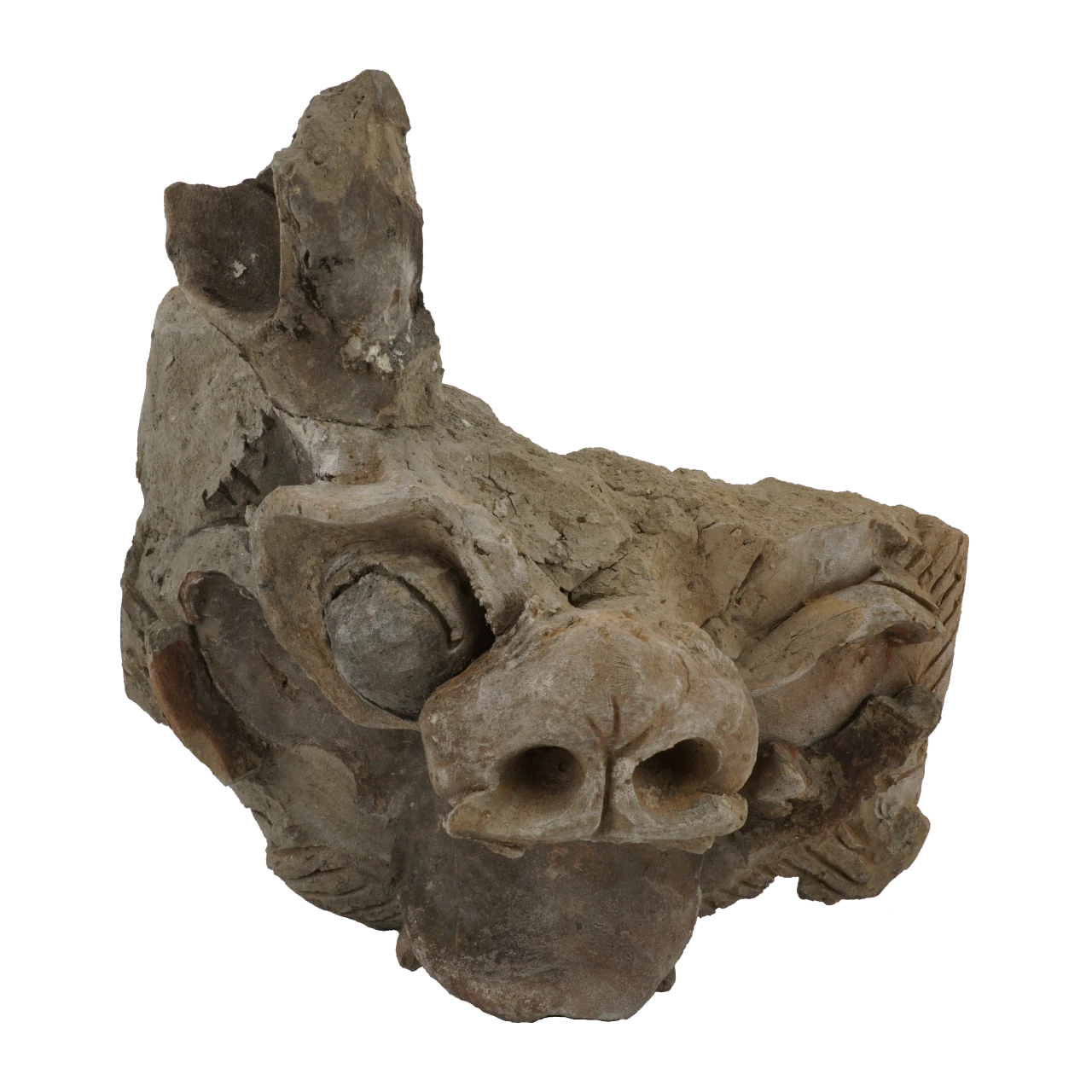

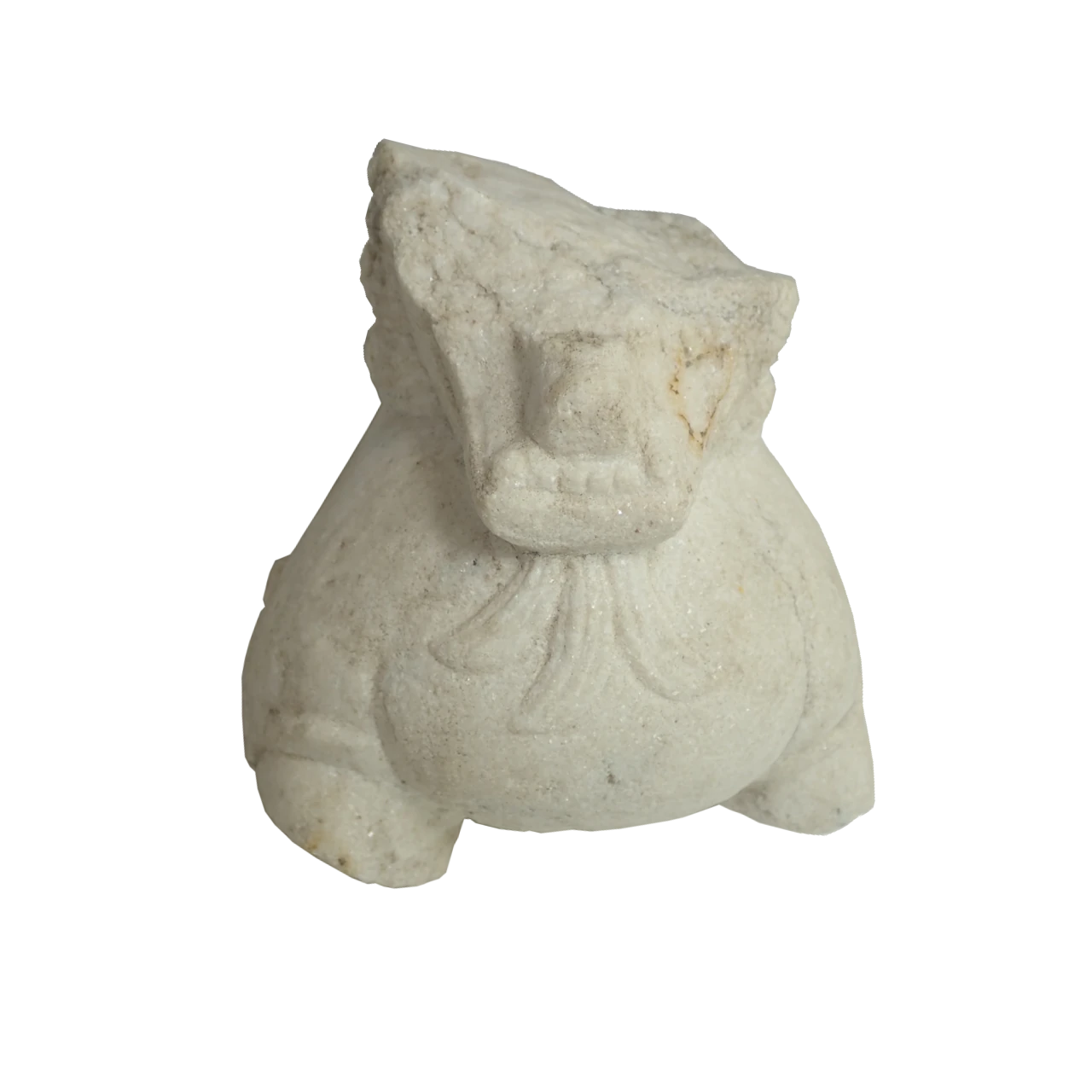


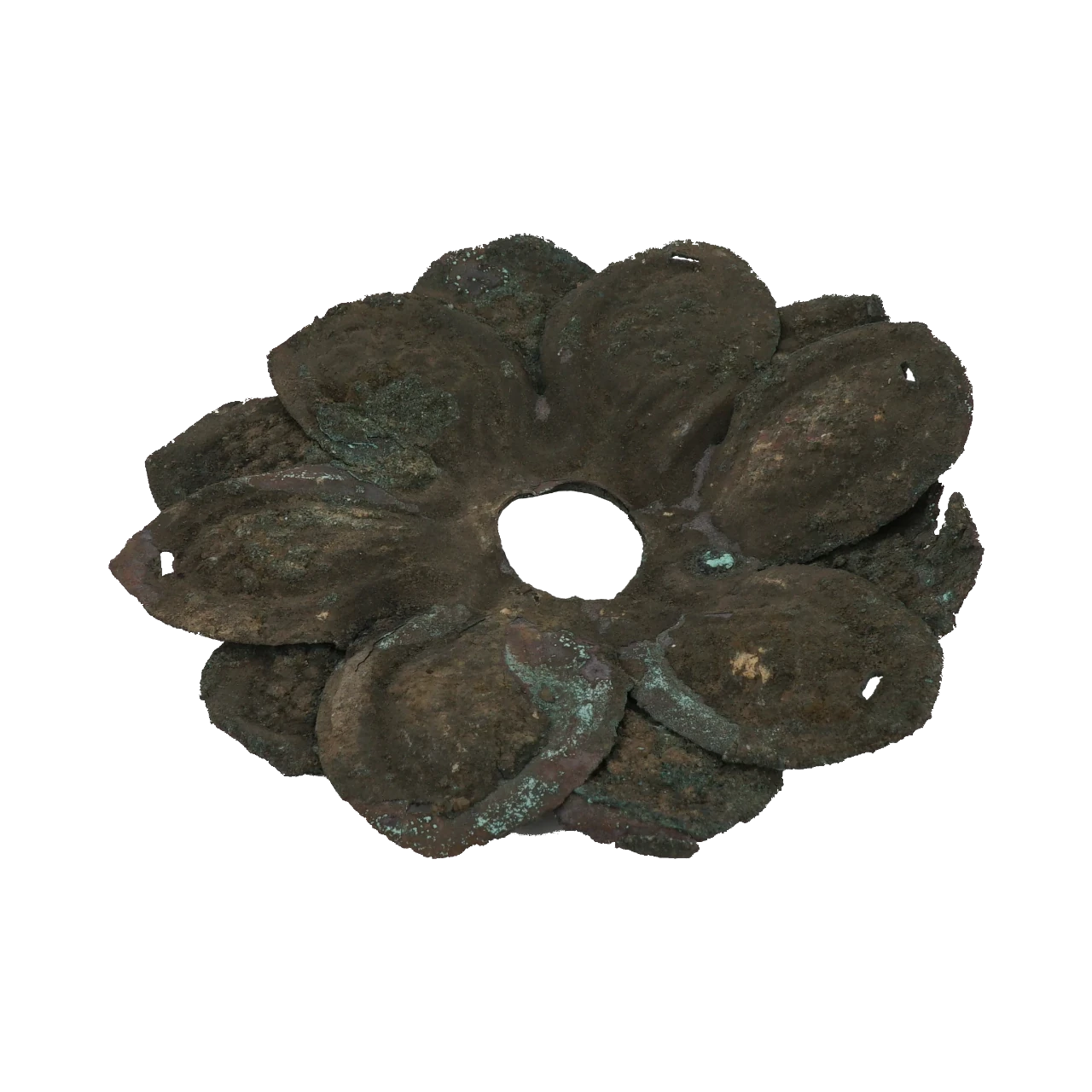
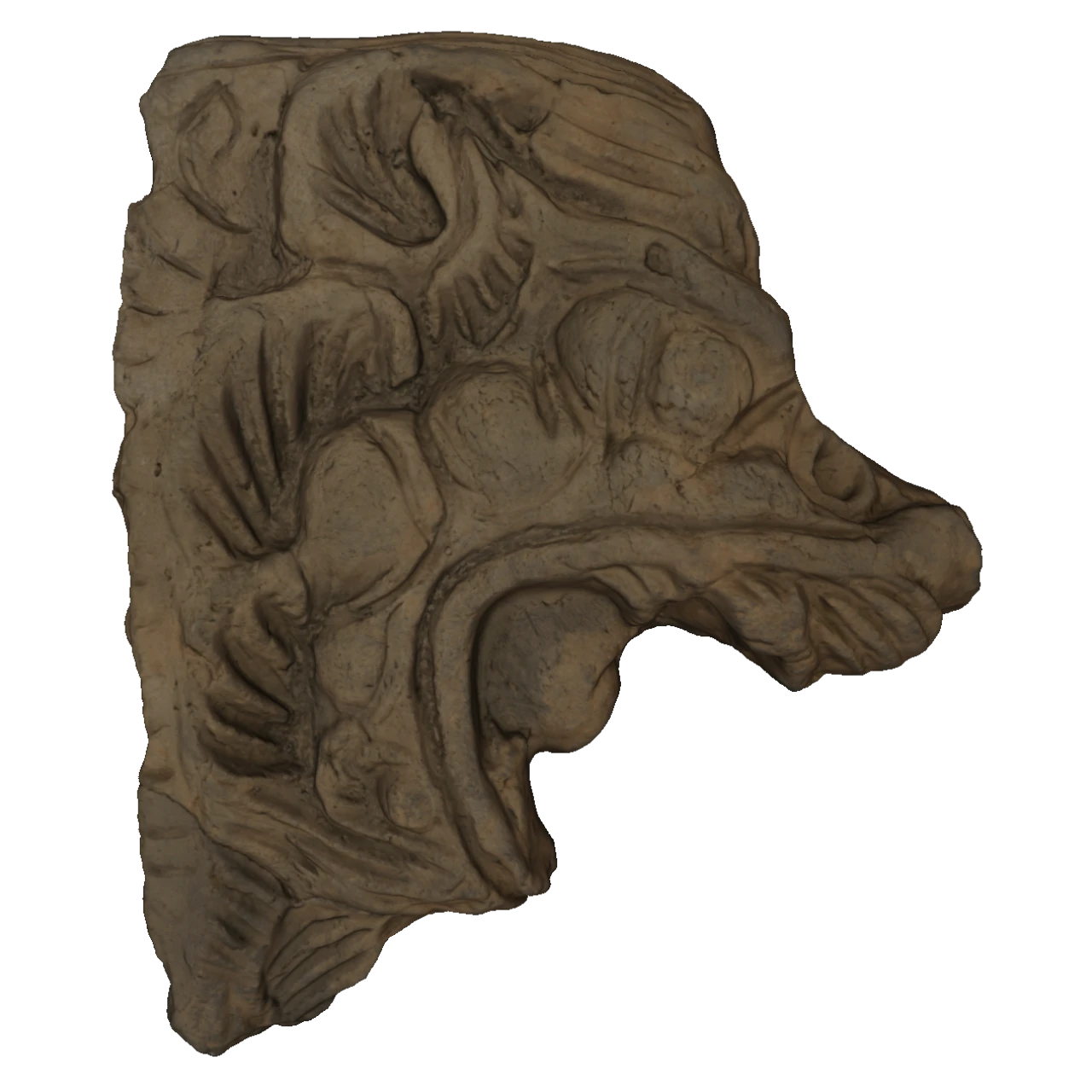

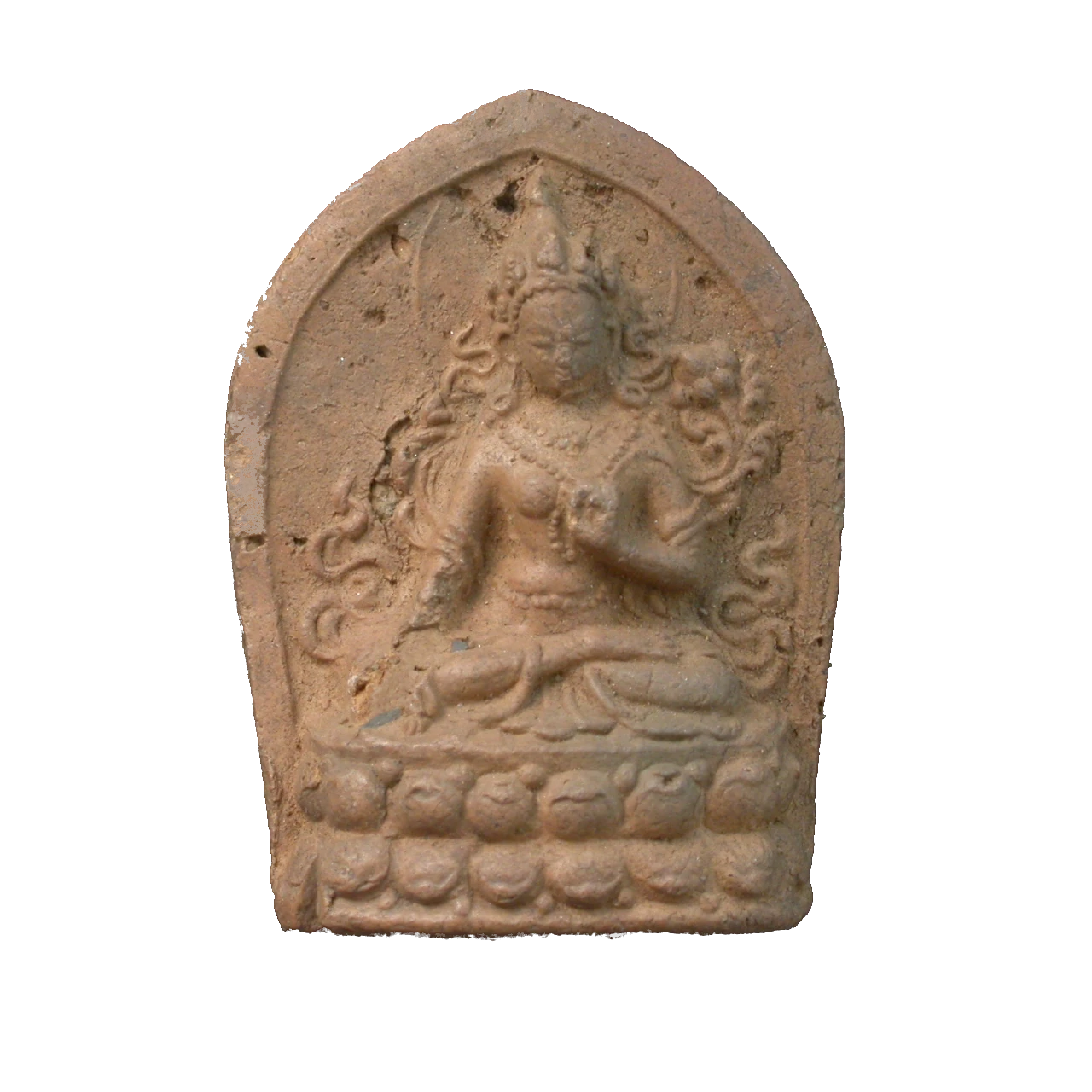

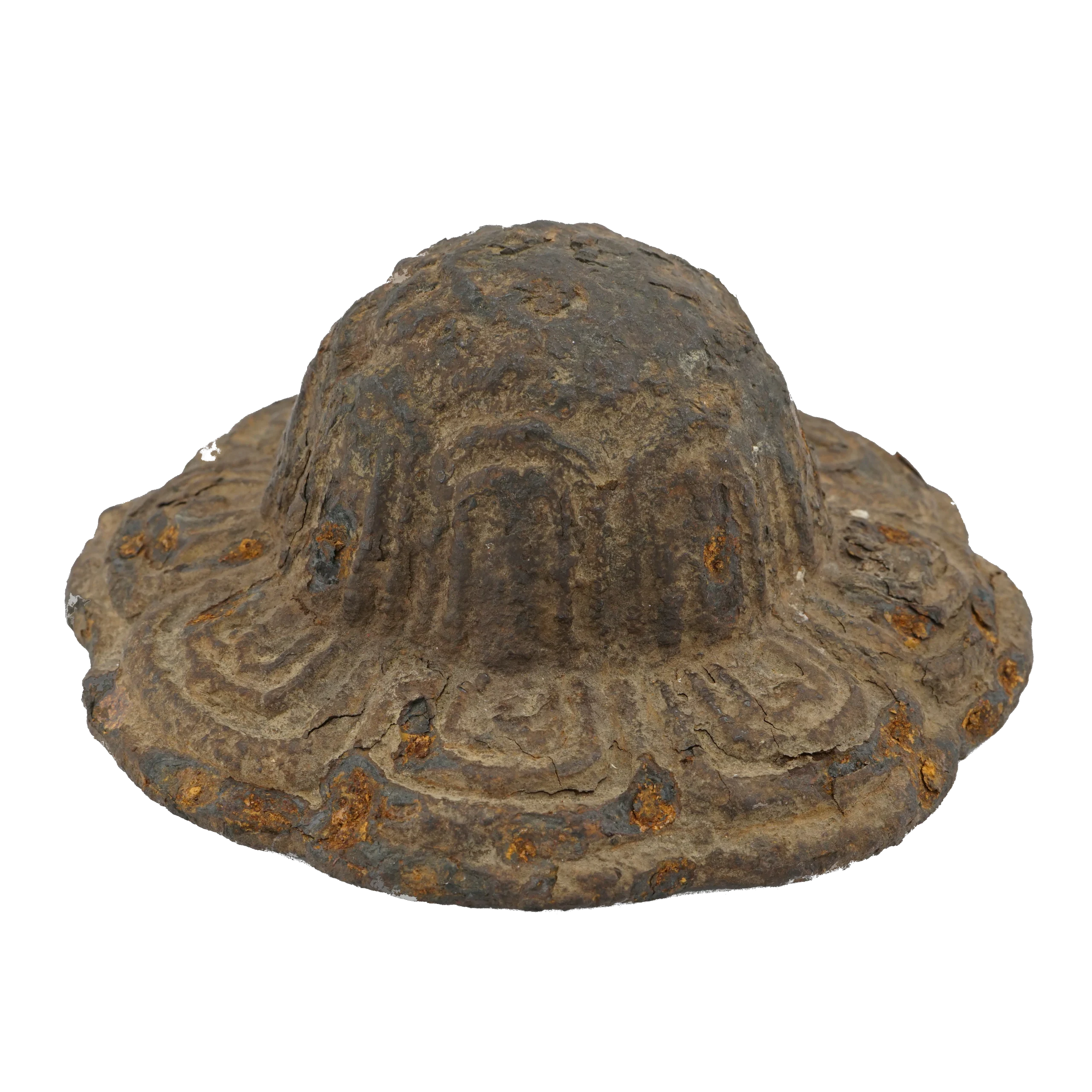
The Well of Karabalgasun
The discovery of the Karabalgasun well is one of the highlights of the long-standing research collaboration. The archaeological exploration of the citadel of Karabalgasun was actually due to be completed in 2014. However, an initially inconspicuous discoloration of the earth in the courtyard area of the manorial living quarters meant that the excavation had to be continued in the following years. It was not until 2018 that the mystery was solved, as the 13-metre-deep vertical shaft that was uncovered was the citadel’s well, which had been built to provide an autonomous water supply even during times of siege. The construction of the well had been exceptionally well preserved, as had the numerous outstanding finds that were discovered in its backfill.

